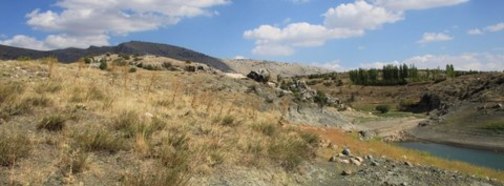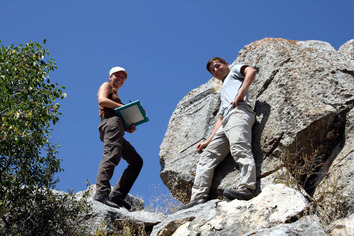Further Settlements, Hilltop-fortifications and Rural Installations
During the campaign in 2012 in particular, we discovered several surprising sites which are of great importance for our picture of the Kibyratis, its settlement patterns and its material culture.

The first group of these sites is fortified and situated on various hilltops of the region. They cannot all be ascribed to the same epoch and also seem to differ functionally. Some of them must probably be regarded in direct relation with nearby settlements in the plains and interpreted as refuges for a rural population (‘Fluchtburgen’). But others seem to have functioned as fortified sheepcotes used either permanently or temporarily. Some of these ‘compounds’ might also be regarded as regular farmsteads of a population of shepherds in the countryside.
The phenomenon is to be examined in a wider context. A first evaluation was undertaken at the end of 2012 in a contribution to the colloquium in memory of Thomas Marksteiner in Vienna and will be published soon.
In regard to these hilltop-fortifications, a connection has already been drawn to some settlements in the plains. The perhaps most important of them is situated close to Söğüt in the most southern part of our research area. This settlement was inhabited for a long time but obviously had its climax during the Roman Imperial period. Among the pottery sherds collected from the surface are also some that can be connected with nomads of the Seljuk era. In addition, numerous reliefs, probably from the Hellenistic period, have been found within and in the vicinity of the settlement, which seem to have housed also a rural sanctuary.
The last prominent site detected during the campaign in 2012 is a vast settlement close to the town of Karamanlı. According to scattered pottery sherds it was founded in the pre-Hellenistic period but flourished during the Roman Imperial period and Late Antiquity. On account of numerous installations for the pressing of wine or olive oil scattered all over the settlement it must have served as a kind of centre for these products. This somehow surprising discovery has decisively changed our picture of the economic structures of the Kibyratis especially during the Roman Imperial and Late Antique periods. In addition, the settlement also possessed a large church.


